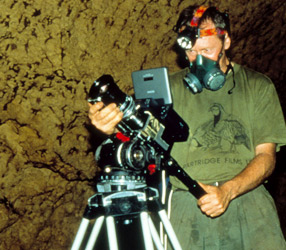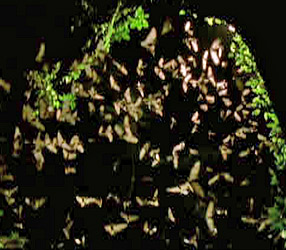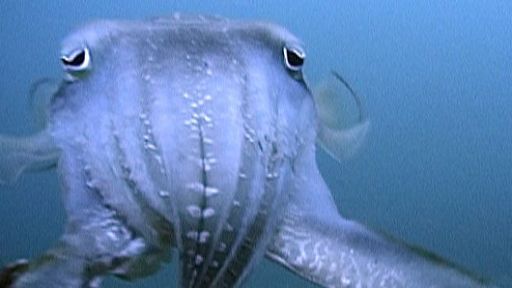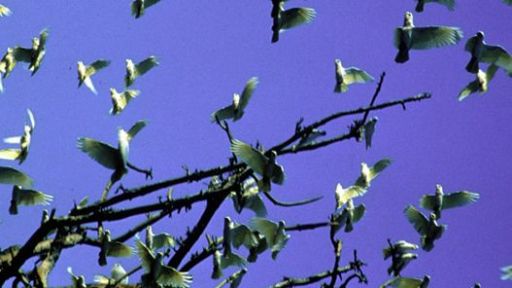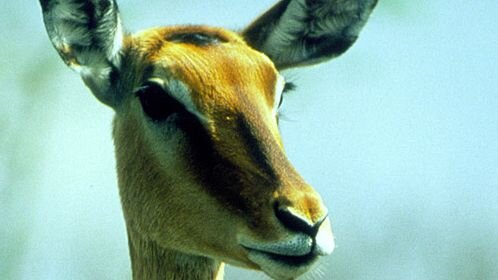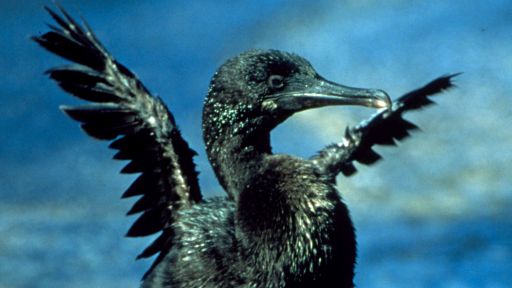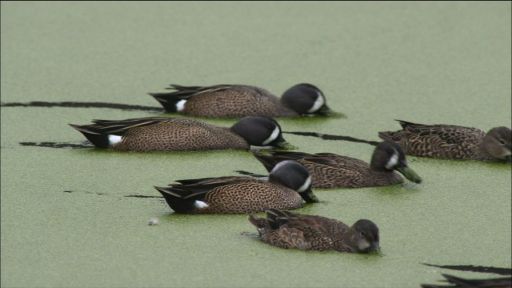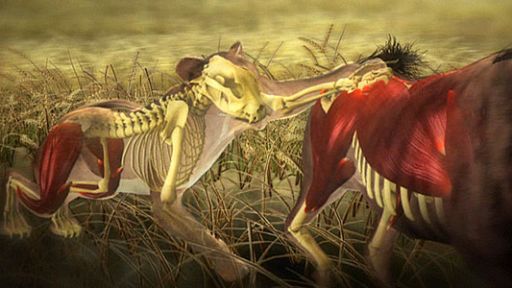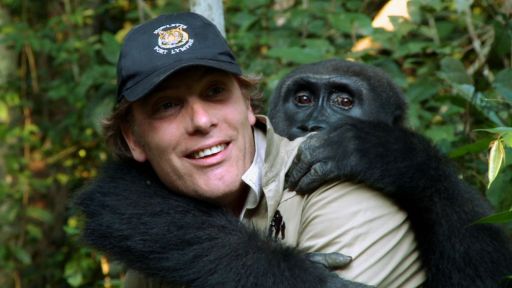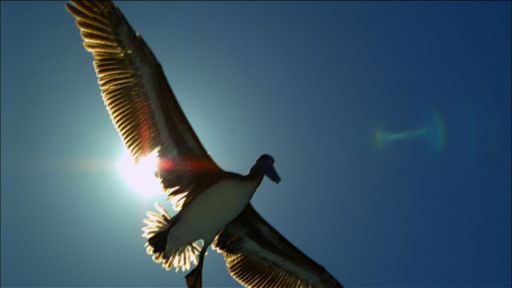In a mountain rainforest on the island of Trinidad, at the narrow entrance to a deep and noxious cave, TRIUMPH OF LIFE series producer Nick Upton and cameraman Jim ClarBatse prepare for an unusual challenge. Several hundred thousand bats, including vampire bats, live in the cave, along with millions of other creatures. When darkness comes, the bats will rush to fill the night sky. Upton’s goal is to film this fantastic exodus from inside the cave. The results are on view in the six-part NATURE series TRIUMPH OF LIFE.
From Nick Upton’s Diary:
“This is our sixth day at the cave. With luck, it will be our last and we can move on. I won’t miss lugging the equipment up that mountain terrain, and then lowering it piece by piece on a rope down a 30-foot shaft into the caveBats. But that isn’t the worst of it. When Jim and I need to clear our access ladder for a scene, we’ve had to enter the cave through the squeeze hole — an incredibly narrow passage that you have to wriggle through feet first. It bends in the middle and ends in a four-foot drop into piles of bat guano. It’s no joke, especially for a six-foot-three, 210-pounder like me. I’ve come close to getting stuck more than once. And all the while you’re maneuvering, bats are fluttering near your face and the cockroaches are skittering along the walls. We did this as many as six times some nights. Once, when I was about halfway through the squeeze-hole by myself, I knocked out the battery of my head-lamp and was stranded in total darkness. It took several jittery minutes to reinsert the battery and reconnect its wires by touch. Of course, I knew Jim would look for me eventually, but being wedged in solid rock with all that life teeming around me in the darkness made those minutes feel like hours.”
Night of the Guano
“The darkness, however, is by no means the only threatening aspect of this environment. The extreme heat and humidity are stifling, and the air is acrid with gases rising off the huge heaps of guano. Inhaling fungal spores in the air can cause a serious disease called histoplasmosis, so we wore face masks all the time. As for the creatures that share the cave with the bats, most are harmless, even the creepy-looking whip scorpions. But it’s essential to watch out for the poisonous snakes. The intense heat means that protective clothing is out, and one night I was bitten by a blood-sucking bug that sometimes carries a debilitating disease. But I managed to dislodge it before it could really go to work.
“Despite all the creatures in the cave and the dangers of navigating it, one thing above all else stands out as the most objectionable aspect of this underground environment — it seethes with millions of four-inch cockroaches. They live on the bat droppings and sometimes the ground actually seems to pulsate with them. In truth, the roaches aren’t really a physical danger, but they can be a bit disconcerting when they fly into you in the dark or crawl under your shirt.”
Rescuing the Pups
“Perhaps this will surprise some viewers, but the bats pose no danger either. BatsAnd that’s just as well, because in a few moments, Jim and I and a camera will be positioned between the cave’s exit and the third of a million bats that will fly past us at full speed. This should allow us to capture an amazing spectacle. So far, we’ve recorded some truly intimate aspects of bat behavior, such as feeding, breeding, and the dramatic rescuing of bat pups that fall from the roof of the cave by ‘baby-sitter’ bats. Until now, this fascinating behavior had been witnessed only by a handful of researchers. Capturing these scenes required a subtle touch. We used an infrared filming system to avoid disturbing the bats, and spent five long days in the cave, working in total darkness most of the time.
“However, the bats aren’t nearly so sensitive leaving the cave, and so for this scene we’ll use normal filming lights, powered by a large generator, which, by the way, we and our guide had to drag up the mountain, nearly killing ourselves.”
Exodus
“The sun has gone down, and already we can hear thousands of bats flitting around in a deeper portion of the cave, calling loudly. The charge is about to begin, and Jim and I have done all we can to prepare ourselves. And here they come, directly towards us, whizzing by our faces by the hundreds at first, then quickly by the thousands, the tens of thousands, the hundreds of thousands — pouring out into the night through the narrow exit. On and on it goes, for 40 heart-stopping minutes. But it seems like only five minutes to us, as we frantically switch lenses, change camera positions, adjust the lights, and record the eerie sounds.
“This is our chance to record this moment forever. It has been one of the most amazing experiences of my life — an entire civilization of bats swooping past us just inches away. And what an unforgettable demonstration of the astounding accuracy of their sonar abilities, for not one bat ever struck us! For the unique achievement inside that cave, I have the greatest admiration for my long-suffering cameraman. Jim seemed totally unfazed by the conditions; but then, he’s one of the real ‘hard men’ of wildlife filmmaking. As for me, despite all the hard work and discomfort, I find myself lookingBat forward to returning here some day. There is much more to film and to learn. Bats are remarkable animals, far more intelligent and sociable than people realize. I feel privileged to be in their strange, underground world and to have the opportunity to share the experience with the viewers of NATURE.”


